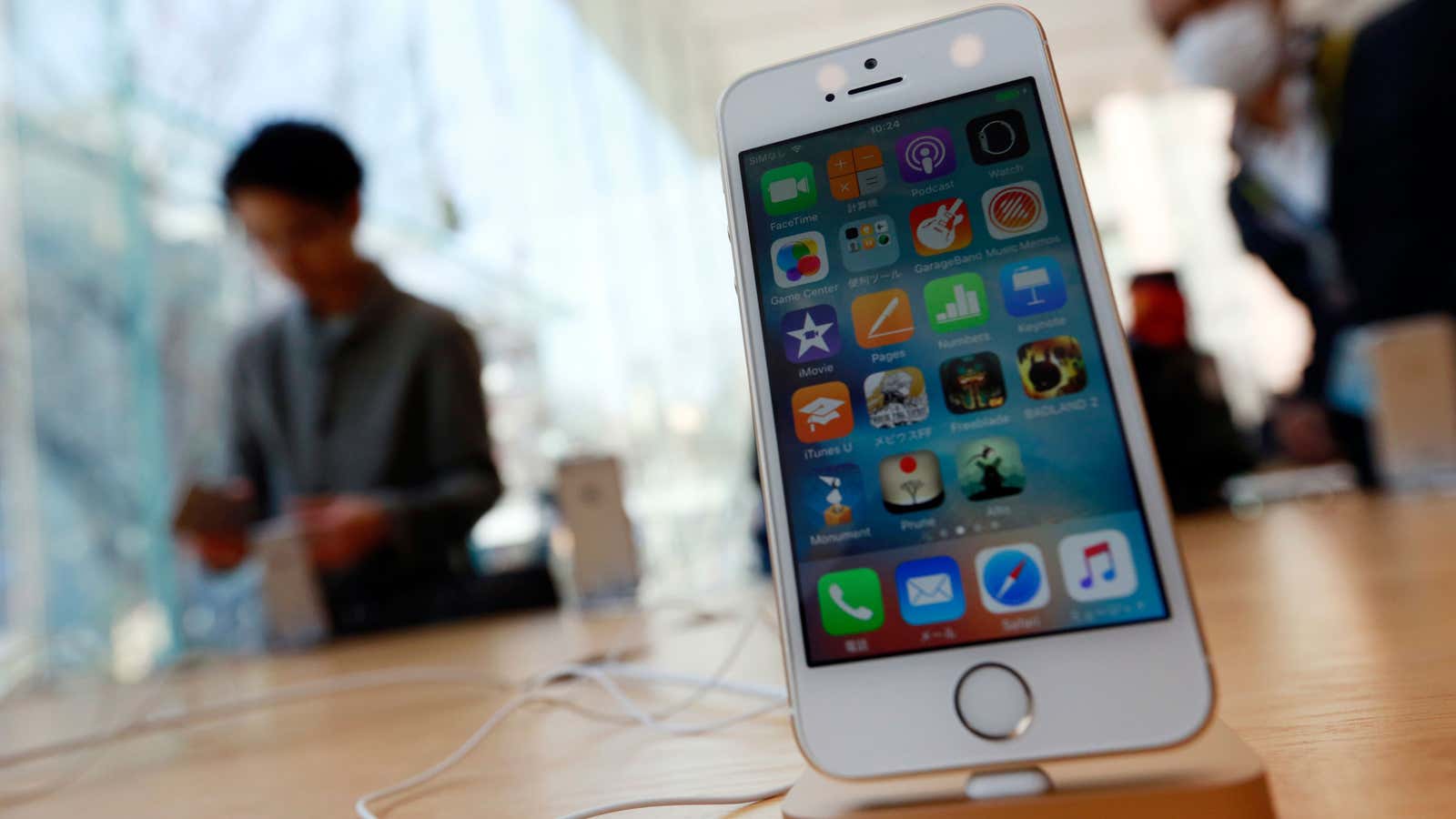When Apple took the wraps off the iPhone SE in March, fanboys (and girls) everywhere wondered, is that it?
In the past, a new iPhone has been cause for celebration, spurring long queues of people, sometimes camping overnight, in front of Apple Stores on launch day so they would be among the first to get their hands on the device.
The iPhone SE, though relatively cheap at $399 to $499 in the US, was underwhelming. This was essentially the innards of the iPhone 6S jammed into the body of the now-dated 5S. While many were clearly disappointed, Apple saw the device as a way to capture a larger share of the lower-priced smartphone market. The strategy seems to be paying off.
According to a June 15 report from Credit Suisse, the market for $500-plus phones has narrowed in recent years, comprising a smaller share of smartphones globally.
The iPhone SE is Apple’s ticket to seizing greater market share of cheaper devices. Of smartphones priced at $300 to $500, Apple’s share is projected to grow to 17% globally in 2016 from 8% last year.
With the iPhone SE, Apple, a luxury brand that has been hesitant to lower its prices, is now targeting price-sensitive customers in two markets with the biggest potential for growth: India and China. While analysis of Apple’s web traffic following the iPhone SE’s unveiling reflected relatively lukewarm interest, visits from India and China spiked 160% and 150%, respectively, far above the 80% average jump globally.
Apple has seen immense success in China, but sales there have slowed down, and the company is hedging by going after India. Research from Morgan Stanley showed that many Indians view Apple as an aspirational brand, but the largest barrier remains its devices’ price tag. In fact, a survey from the firm, which was conducted before the iPhone SE’s debut, revealed many Indian consumers would choose to buy a second-hand (and cheaper) iPhone over a new, non-Apple branded phone if it were available to them. Apple doesn’t yet have any retail stores in the country, but the launch of the iPhone SE shows it’s trying to court Indian customers.
